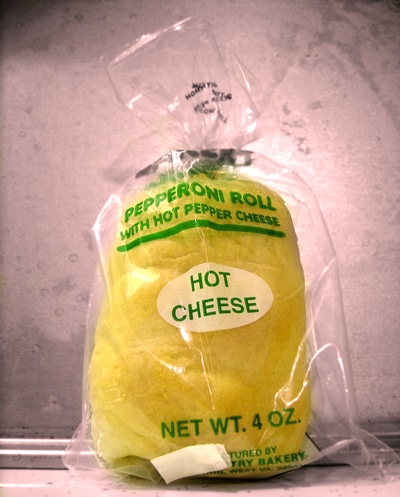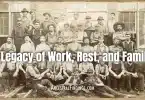The foods our ancestors ate are an important part of our family histories. They tell a lot about a family, such as occupation, income, the region in which they lived, and the time period in which they lived. If you put all these things together, you get a pretty detailed picture of our ancestors based on the foods that were common to their diets. Even archaeologists use the study of foods to place people in their proper historical contexts. When they dig up unusually well-preserved remains, such as the old Medieval burial of a royal or noble in lead, or mummies, they often examine the contents of their stomachs to see what was in their last meal. The foods they find tell them so much about how that person lived, where they originated, what their health was like, what their social class was, and more. The history of food is intimately tied into the study of genealogy.
We even pass recipes down through families. There are families with treasured family recipes that have been handed down through generations. Some of them stay in the family, while others may use the special recipe to start a restaurant or food company. Family recipe books are popular items at family reunions, and make treasured gifts to members of any generation.
One unique food that tells a lot about a person’s family history is the pepperoni roll. What makes this food so informative to genealogists is its regional nature. The pepperoni roll is mainly found in West Virginia and some of the nearby surrounding areas like Western Pennsylvania, Appalachian Ohio, and Western Maryland. It originated there, and can still be found there today. While other areas of the country are populated by people who have never heard of the pepperoni roll, those in West Virginia and the surrounding areas can find it in grocery and convenience stores to this day. In fact, it is arguably the most popular snack in West Virginia, and certainly, the food most closely associated with that state.
In order to know about the history of the pepperoni roll, you first have to know what it is. The basic pepperoni roll is a yeast bread roll made of soft, white flour, with pepperoni baked in the middle of it. While the roll is baking, fat from the pepperoni melts into the bread, giving it a spicy oil infusion. The fat in pepperoni is solid at room temperature, so it only becomes liquid and able to give the roll its unique flavor by baking the pepperoni inside the bread. While they are usually eaten as a snack, pepperoni rolls can also be eaten as lunch, and are served either at room temperature or lightly warmed.
 The origin of the pepperoni roll goes back to 1927 when Giuseppe “Joseph” Argiro made them and sold them at the Country Club Bakery in Fairmont, West Virginia. Argiro originally invented the pepperoni roll as a lunch for the local coal miners. They made an excellent meal for coal miners because they had protein and fat for energy and staving off hunger, and they did not require refrigeration, which made them easy to tuck into a pack or pail and take to the mines on their own with no other preparation needed for them. Argiro sold the pepperoni roll to his hungry miner customers from the time he invented them, until around 1950, when they began to gain a more generalized popularity.
The origin of the pepperoni roll goes back to 1927 when Giuseppe “Joseph” Argiro made them and sold them at the Country Club Bakery in Fairmont, West Virginia. Argiro originally invented the pepperoni roll as a lunch for the local coal miners. They made an excellent meal for coal miners because they had protein and fat for energy and staving off hunger, and they did not require refrigeration, which made them easy to tuck into a pack or pail and take to the mines on their own with no other preparation needed for them. Argiro sold the pepperoni roll to his hungry miner customers from the time he invented them, until around 1950, when they began to gain a more generalized popularity.
Argiro originated the pepperoni roll at a time when Italian foods were gaining popularity in West Virginia and the surrounding Appalachian areas. With the lucrative mine and railroad operations centered there, many immigrants from Italy were attracted to the region, and brought their cuisine with them, eventually sharing it with the local American populace. The pepperoni roll is similar to the Italian calzone, as well as the British sausage roll (which was invented in the mining communities of the United Kingdom).
As a popular regional food, the traditional pepperoni roll has taken on some variations today. Among these are the cheese and pepperoni roll, single stick pepperoni rolls, multi-stick pepperoni rolls, and shredded or ground pepperoni rolls (with shredded or ground pepperoni inside the roll instead of a solid stick).
The U.S. government tried to get involved in the pepperoni roll industry in 1987 when the U.S. Department of Agriculture wanted to reclassify pepperoni roll bakeries as meat processing plants. This would have subjected them to stricter and more expensive regulations. Bakery owners complained that these regulations would put them out of business, and U.S. Senator Jay Rockefeller (who was a senator for West Virginia) intervened on their behalf, putting an end to the USDA’s plan.
Today, the pepperoni roll remains a beloved regional favorite in West Virginia and the nearby areas. It is quintessential Appalachian cuisine. If you are not from the area, haven’t been there, or don’t know anyone from there, you may not have ever heard of the pepperoni roll. However, if you ever go to West Virginia, you will be sure to see it in stores and gas stations in every city and town in the state. If you are so lucky as to come across a pepperoni roll and have never eaten one before, do yourself a favor and try one. You will be sampling regional cuisine with a long history of association with West Virginia, and your taste buds will be in for a treat, too. You will also know that there are several generations of West Virginian families who have enjoyed the pepperoni roll before you.
If your ancestors come from West Virginia, you can be sure they ate pepperoni rolls (as long as they lived there since 1927). Knowing the history of the food and that your ancestors likely ate it is something that helps you get to know your ancestors better as the people they were. Knowing they snacked on pepperoni rolls gives you a glimpse into their everyday lives that is invaluable to genealogists.






